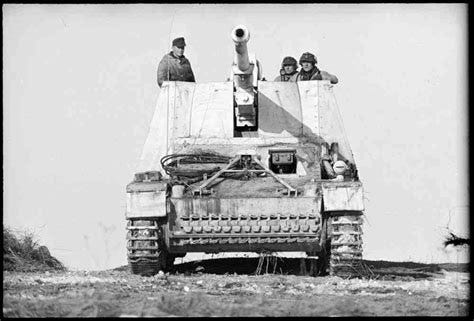The Hornet (Part V)
Integration with other anti-tank weapons
The first, and most important, thing to do is to place the entirety of the anti-tank effort under the leadership of an energetic anti-tank commander so that he might focus its effects upon the place where enemy tanks are breaking through [Brennpunkt]. As a matter of principle, he should solicit the opinions of the leaders of anti-tank, tank, and assault gun units, and speak directly with the overall commander. The radio communications needed to do this should be tested as soon as possible. The leader of the anti-tank defense must use ingenuity to overcome the problems caused by the variety of radio sets in use. (Swapping of radio sets.) Locating the anti-tank commander and the leaders of anti-tank units at division and regimental command posts is a mistake. They belong on the battlefield, leading from command tanks or well-chosen observation posts.
The officers in charge of the anti-tank efforts of divisions must keep a firm grip on the execution of anti-tank defense, plan for the possibility of the employment of Hornets and towed 88mm anti-tank guns, and conduct appropriate reconnaissance. Towed anti-tank guns should not be employed in accordance with their membership in a particular regimental anti-tank company or divisional anti-tank battalion. Instead, the divisional anti-tank officer [Offizier für Panzer Bekämpfung] should deploy light, medium, and heavy anti-tank guns in accordance with the demands that the tactical situation places upon anti-tank defense.
The overall tank warning service worked without a hitch. The assembly of [Soviet] tanks and attacks by individual tanks were reported immediately. Occasional over-estimation of the number of attacking tanks could be corrected with follow-up questions to individual warning stations. In one case, the radio reported the presence of eighty-four tanks, when, in actuality, observers had seen somewhere between four and eight tanks.
Hoppe
Major and Battalion Commander
28 February 1944Source: The posts in this series constitute a verbatim translation of a report submitted by Major Horst-Wolf Hoppe (1909-1997), commanding officer of the 519th Heavy Tank Hunter Battalion (Schwere Panzer-Jäger Abteilung 519) on 28 February 1944. A digital copy of the original document can be found at German Documents in Russia.




Putting the anti-tank units under an energetic commander who is prepared to catch breakthroughs strike me as a bit of a mirror match. In order to defeat a concentrated lance of tanks, a concentrated shield of anti-tank units is used to parry the blow, both of whom are expected, if not required, to lead from the front and feel the pulse of the battlefield from their command vehicles.
Like the knights of prior eras, or the pilots of the First World War, the tank and anti-tank commander of the time takes on a rarefied air as the master of a decisive form of war, both technical in preparation and intuitive in execution.
By the way, that anecdote about four to eight tanks becoming forty-eight tanks reminded me of these movie clips:
https://youtu.be/quGOlbNnWaY